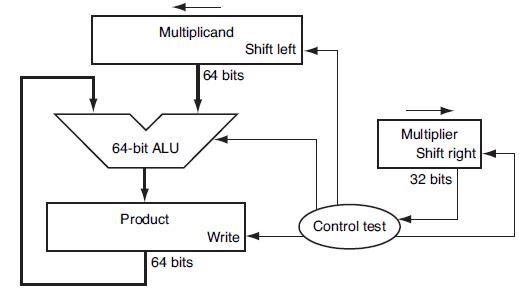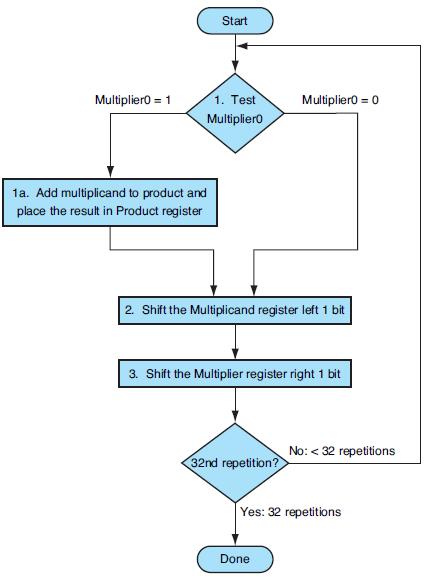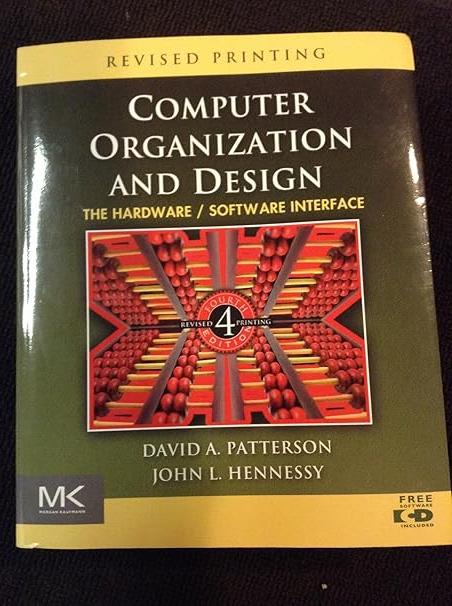Calculate the time necessary to perform a multiply using the approach given in Figures 3.4 and 3.5
Question:
Calculate the time necessary to perform a multiply using the approach given in Figures 3.4 and 3.5 if an integer is A bits wide and each step of the operation takes B time units. Assume that in step 1a an addition is always performed-either the multiplicand will be added, or a zero will be. Also assume that the registers have already been initialized (you are just counting how long it takes to do the multiplication loop itself). If this is being done in hardware, the shifts of the multiplicand and multiplier can be done simultaneously. If this is being done in software, they will have to be done one after the other. Solve for each case.
Figures 3.4
Figures 3.5
For many reasons, we would like to design multipliers that require less time. Many different approaches have been taken to accomplish this goal. In the following table, A represents the bit width of an integer, and B represents the number of time units (tu) taken to perform a step of an operation.
Step by Step Answer:

Computer Organization And Design The Hardware Software Interface
ISBN: 9780123747501
4th Revised Edition
Authors: David A. Patterson, John L. Hennessy





